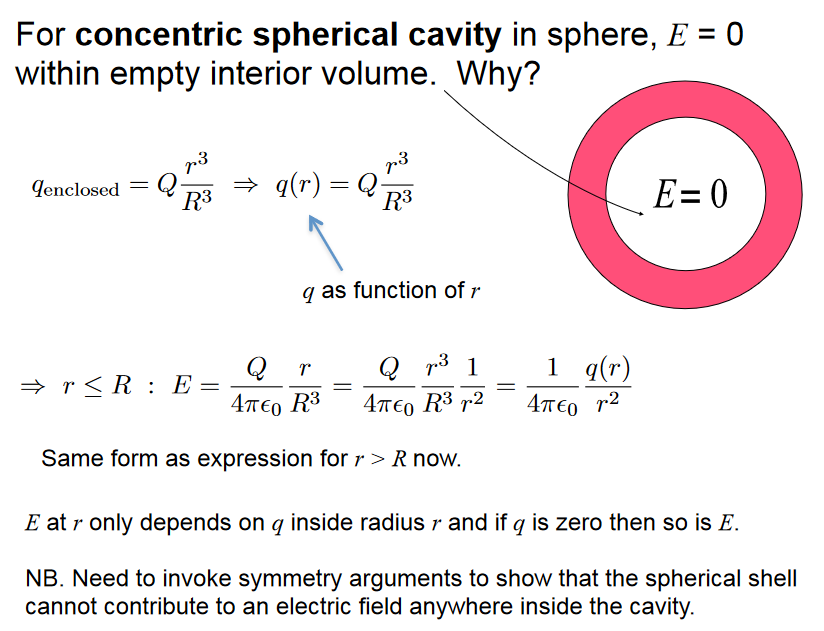A Continuous Charge Distribution which is 3 dimensional and filled in with charges:
Properties
- = Volume charge density (in )
- = Radius of sphere (in )

Electric Field
Assume a uniformly charged sphere (with constant), with total charge and radius . Let be the distance from the centre of the sphere. Then the Electric Field is given by:
This means, the electric field linearly increases inside the sphere, and decreases at outside the sphere.

Note how if we move outside the sphere, the electric field is the same as the electric field for a point charge!
Derivation With Gauss’ Law
We know a sphere is symmetrical everywhere, so the electrical field must also be symmetrical. This means the field lines extend radially outward (or inward if the charge is negative).
As such, a suitable Gaussian Surface is a sphere!
The area vectors of the gaussian surfaces are always parallel to the electric field, due to the charge distribution and the surface being the same shape, so:
Combined, let = radius of gaussian sphere, and = radius of charged sphere:
Outside the sphere
If we are interested in the electric field outside the sphere, we can take a larger gaussian sphere, so the charge enclosed, is simply the charge of the sphere,
Inside the sphere
To find the field inside the sphere, we need a gaussian sphere that’s smaller than the charged sphere. In that case, the charge enclosed can be represented as a ratio of the total charge:
It’s important to note that, due to the gaussian surface being inside the sphere, there’s also a portion of the sphere’s electric charge that affects the surface. However, we can use symmetry arguments to show that it does not matter.#ask
#todo represent both outer and inner radii as a function, like so:
